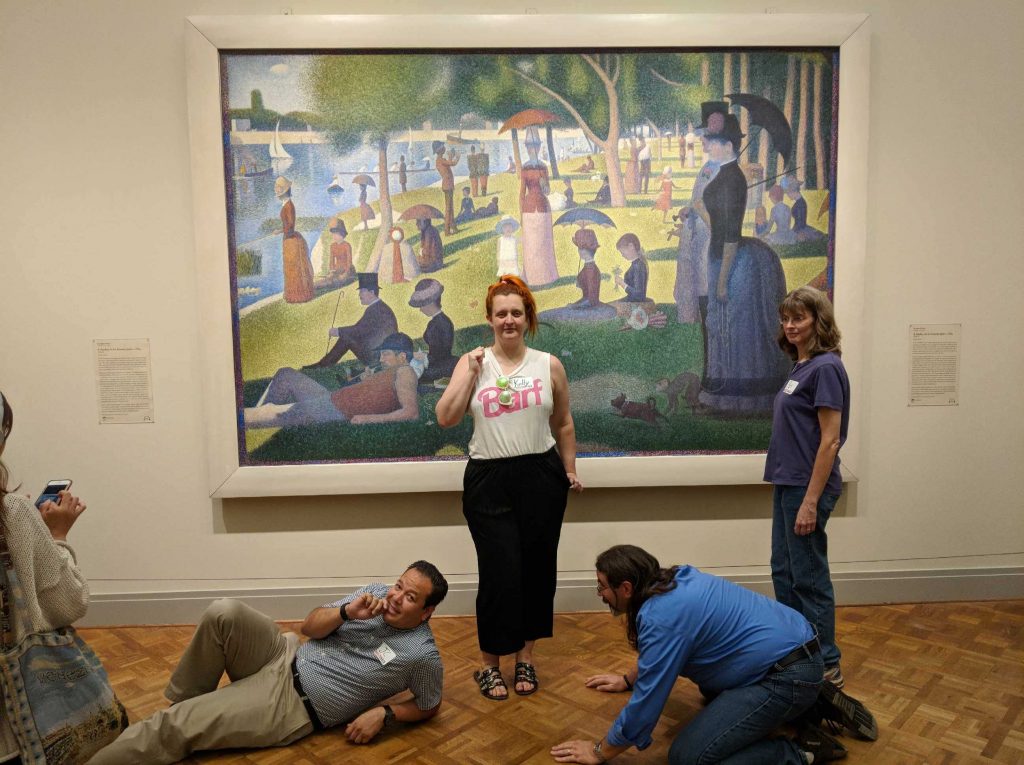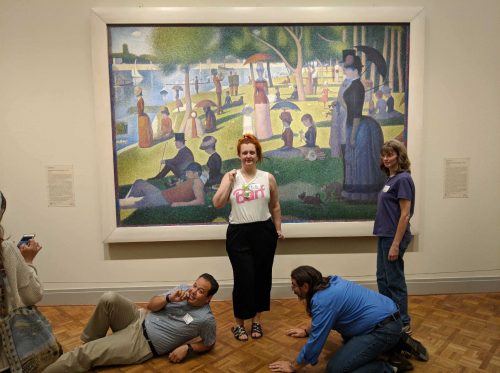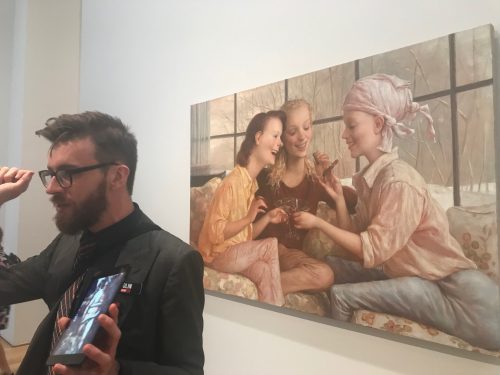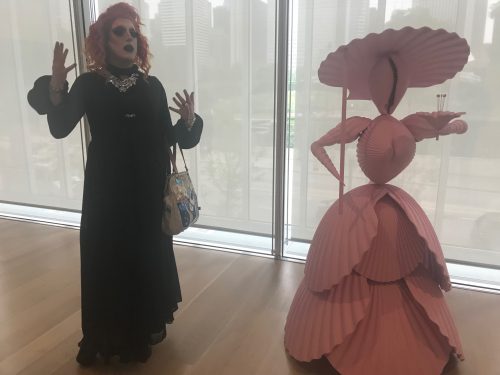
Art Institute of Chicago Hack

Posing in front of “A Sunday Afternoon on the Island of La Grande Jatte” as a chosen member of the painting, one of the tour highlights. Bueller….Bueller….
A while back, a member of the team behind Museum Hack reached out to offer me a chance to experience the Museum Hack Art Institute tour: drag queen edition (formally titled Art Institute of Chicago: Drag Tours). Part of the reason she reached out is my blogging about Chicago drag and its relationship to the Master of Arts Management program here at Columbia College Chicago, so it dovetailed nicely with my interests and work. I want to continue making drag as visible as possible, and on top of that, going on a tour featuring a drag queen in a prominent art institution seems like the perfect combination of drag visibility and disruption. It doesn’t hurt that the drag queen in question is my friend Wanda Screw.

Our guide Colin, standing in front of a painting by John Currin titled “Stamford After Brunch.” We were playing Funny or Dead, where we guessed whether a piece was by John Currin or some dead guy.
The tour broke down into three segments. Our official tour guide Colin got the group together and broke the ice, taking us to a few of his highlighted pieces. One thing to note about Museum Hack tours is that they move fast–you walk fast and you digest art fast, with games and different methods of engagement keeping you from suffering what has been documented as museum fatigue (that sleepy shuffling feeling you get after looking at so many pieces your brain goes into information overload). My favorite ongoing game during the tour was that Colin showed us a headless Roman sculpture, and asked us to find a photo of a head in the museum that we believed could have once belonged to the sculpture, and to explain why the head had become separated from the body.
The second leg of the tour was led by Wanda, who took us to three different pieces she had selected within the Institute. The best part of her segment is that she related each of these pieces back to the art of drag, and the nature of being on the outskirts as someone who presents gender differently. My revelation during her segment of the tour was “Self Portrait of My Sister” by Gertrude Abercrombie. Abercrombie would often paint herself looking markedly different in an embodiment of her desire to be a different person, to fulfill a fantasy; this quality is comparable to the desire of a person performing drag to embody a different character, one totally outside of their day to day experience.

Wanda with the sculpture “Woman with Dog” by Katharina Fritsch in the modern wing.
The tour ends with a final leg hosted by Colin with a few more pieces, and everyone shares their stories about which head from the museum belonged to the headless Roman emperor. The winner receives a prize and I’m happy to report that winner was me—my prize being my very own Museum Hack Art Institute refrigerator magnet.
There were multiple parts of this tour that I thought were relevant to my experience at Columbia College and what I’m studying, predominantly that it reminded me that as a Columbia College student I have free admission to the Art Institute, and I had forgotten to take advantage of this world famous resource literally blocks away from where I am studying. Museum Hack revitalized my interest in the institution, and also gave me an opportunity to experience their business model first hand. In my curatorial practicum last semester, we discussed potential programming for our exhibitions, and the Museum Hack model is a really interesting way to get folks to interact with artworks. Mostly, it makes the works seem accessible which can be difficult if you’re just wandering around a museum with 300,000 plus pieces and a sense of resolve…or resignation to trying to prove your worth as a Serious Person.
As I finished the Museum Hack tour, I couldn’t help but wonder: what is art without the desire to express the human condition, and connect people through it? What is the business of art without understanding the ways to get people involved and engaged with artworks? I’m grateful for the opportunity to think about these questions in the context of Columbia, and also for my working relationship with Columbia that affords me the opportunity to participate in the swirl of my interests: art administration, drag queens, and a little PR moment with Museum Hack.
